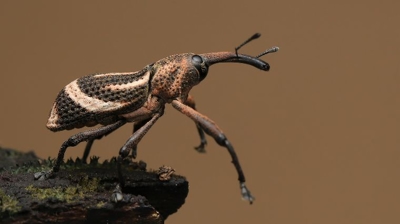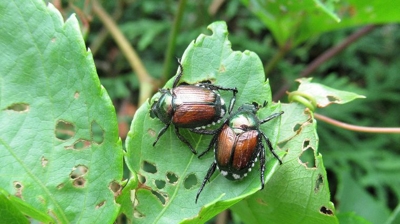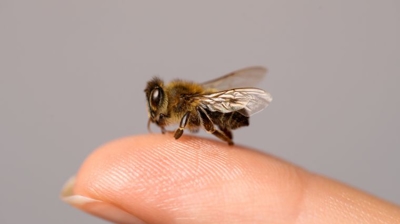
Clover Mites
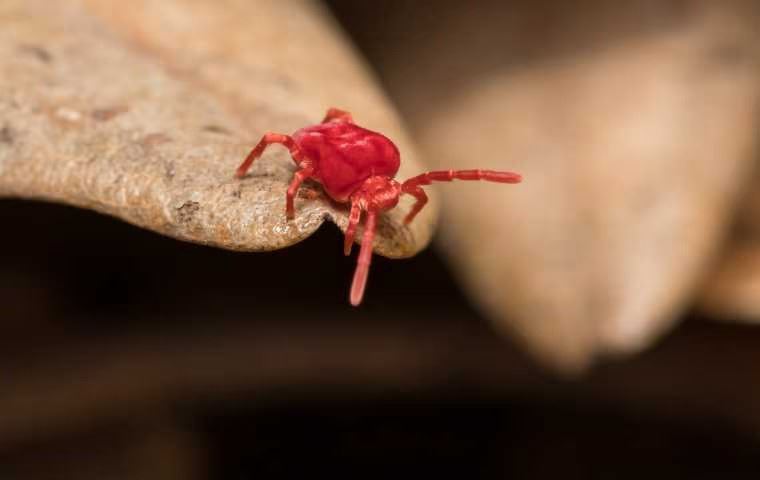
What Are Clover Mites?
Clover mites, scientifically known as Bryobia praetiosa, are tiny arachnids that belong to the family Tetranychidae, which includes other mites like spider mites. These mites are often considered agricultural pests and are known for their distinct reddish-brown coloration. Here is an overview of clover mites:
- Physical Characteristics: Clover mites are incredibly small, measuring about 0.75 millimeters in length, making them barely visible to the naked eye. They have an oval-shaped body, and their reddish-brown coloration sets them apart. Unlike insects, clover mites have eight legs, which is a characteristic feature of arachnids.
- Habitat: These mites are commonly found in various parts of North America, Europe, and Asia. They thrive in temperate regions and are often associated with lawns, gardens, and agricultural crops.
- Feeding Habits: Clover mites are plant feeders and are considered pests because they feed on the sap of various plants. They are particularly fond of clover, grasses, and other low-lying plants. While they can cause damage to plants, it is usually not severe enough to be a major agricultural concern.
- Life Cycle: Clover mites have a relatively short life cycle, with four stages: egg, larva, nymph, and adult. They reproduce via parthenogenesis, which means the females do not require mating to lay fertile eggs. This characteristic can lead to rapid population growth.
- Behavior: These mites are primarily active during the spring and early summer when temperatures are moderate. They become dormant during hot summer months and in the cold of winter. During their active periods, they may enter buildings seeking shelter, which can make them a nuisance for homeowners. Unlike some other mites, clover mites do not bite humans and are not known to transmit diseases.
Clover mites are small arachnids known for their reddish-brown coloration. They feed on plant sap, are active in the spring, and can sometimes become household pests. Understanding their biology and implementing appropriate control measures is essential for managing their impact on agriculture and homes.
Are Clover Mites Harmful?
Clover mites (Bryobia praetiosa) are generally considered nuisance pests rather than harmful ones, but they can still cause problems in certain situations. Here are some ways they might be considered harmful:
- Home Invasions – Clover mites invade homes in large numbers, especially during the spring and fall. They can become an overwhelming nuisance as they crawl on windowsills, walls, and furniture. Their sheer numbers can be distressing to homeowners.
- Staining Surfaces – When crushed, clover mites leave behind a reddish-brown stain due to the pigments in their bodies. This staining can damage walls, carpets, furniture, curtains, and other household surfaces.
- Lawn and Plant Damage – Although clover mites do not bite humans or pets, they feed on grasses, clover, and other vegetation. In large infestations, they can cause noticeable damage to lawns, turning grass brown or yellow in patches.
- Psychological Distress – For some homeowners, the presence of a large number of tiny red mites in their living space can cause anxiety and frustration, particularly because they are difficult to eliminate completely.
- Potential Allergies or Irritation – While they do not bite, some individuals may experience mild skin irritation if they come into contact with clover mites. However, this is rare and not a significant health concern.
While clover mites are not dangerous in terms of spreading disease or harming humans and pets, their presence can still be bothersome, especially when they invade homes in large numbers. Effective pest control measures can help mitigate these issues.
Learn more: Do Clover Mites Bite?
Clover Mite Appearance
Clover mites (Bryobia praetiosa) are tiny arachnids with distinct physical characteristics. Here is a detailed description of what clover mites look like:
- Size: Clover mites are extremely small, measuring about 0.75 millimeters in length. They are one of the tiniest arachnids, making them barely visible to the naked eye.
- Body Shape: These mites have an oval-shaped body, and their overall appearance is similar to that of other mites. They lack the segmentation seen in insects, and their bodies are soft and slightly flattened.
- Color: One of the most distinctive features of clover mites is their coloration. They are typically a bright reddish-brown or maroon color. This reddish hue sets them apart from many other mite species, which are often paler or translucent.
- Legs: Clover mites, like all arachnids, have eight legs. These legs are relatively long and are often pale or light in color compared to their body. The presence of eight legs is a key characteristic that distinguishes mites from insects, which have six legs.
- Antennae and Mouthparts: Clover mites have specialized mouthparts for piercing plant cells and sucking out the sap. They lack distinct antennae, and their mouthparts are adapted for feeding on plant juices.
- Overall Appearance: When observed up close, clover mites have a glossy or slightly shiny appearance. Their small size and reddish-brown color make them stand out on plant surfaces.
Clover mites are extremely small, oval-shaped arachnids with a reddish-brown coloration. Their eight legs, specialized mouthparts for plant feeding, and tiny size are key characteristics that help identify them. These mites are often associated with lawns and plants, and their distinctive color makes them recognizable when seen against a contrasting background.
Learn more: Tiny Red Bugs
Clover Mite Habitat
Clover mites are most commonly found in temperate regions where lush vegetation is present. You are most likely to encounter them in the following areas:
- Lawns and Gardens – They thrive in well-fertilized grass, especially in areas with excessive nitrogen, making manicured lawns, golf courses, and parks prime locations.
- Around Foundations and Walls – They tend to congregate on the sunny sides of buildings, especially near windows, doors, and siding, where they can find warmth.
- On Patios, Decks, and Outdoor Furniture – Since they migrate in large numbers, they can be found crawling on hard surfaces like patios, decks, and even outdoor furniture.
- Near Shrubs, Flowers, and Trees – Clover mites feed on a wide range of plant materials, including clover, grasses, ornamental plants, and shrubs near homes.
- Inside Homes and Buildings – During dry or extreme weather conditions, they may invade homes, usually entering through cracks in walls, window screens, and doorways.
- Mulched or Overwatered Landscapes – Areas with excessive moisture, thick vegetation, and organic mulch can attract clover mites, providing them with both food and shelter.
Clover mites are especially prevalent in the spring and fall, as they avoid extremely hot or cold temperatures. If you are dealing with an infestation, focusing on reducing vegetation near buildings and sealing entry points can help prevent them from coming indoors.
Clover Mite Diet
Clover mites (Bryobia praetiosa) are herbivorous arachnids, and they primarily feed on plant material. Here is a description of what clover mites eat:
- Plant Sap: Clover mites are specialized feeders that primarily consume plant sap, also known as plant phloem sap. They use their specialized mouthparts to pierce plant cells and feed on the sugary, nutrient-rich fluids found within the plant's vascular system. This process is referred to as "sap-feeding" or "phloem-feeding."
- Host Plants: While clover mites are known to feed on a wide range of plant species, they have a particular affinity for specific plants, including clover (hence their name), grasses, and other low-lying vegetation. These mites are often associated with grassy areas and lawns where their preferred host plants grow.
- Damage to Plants: When clover mites feed on plants, they can cause a stippling or speckling effect on the leaves. This damage is a result of the extraction of plant sap, which can reduce the overall vigor and health of the plant. In large numbers, clover mites can potentially damage crops, lawns, and ornamental plants, making them a concern for agriculture and horticulture.
- Migration: During their active periods in the spring and early summer, clover mites may migrate between plants in search of suitable food sources. They often congregate on sunny, exposed areas of vegetation to feed.
Clover mites are not blood-feeding parasites and do not bite humans or animals. They are specifically adapted to feeding on plant fluids. While they can be considered pests in certain agricultural and horticultural contexts due to their plant-feeding behavior, they do not pose a direct threat to human or animal health.
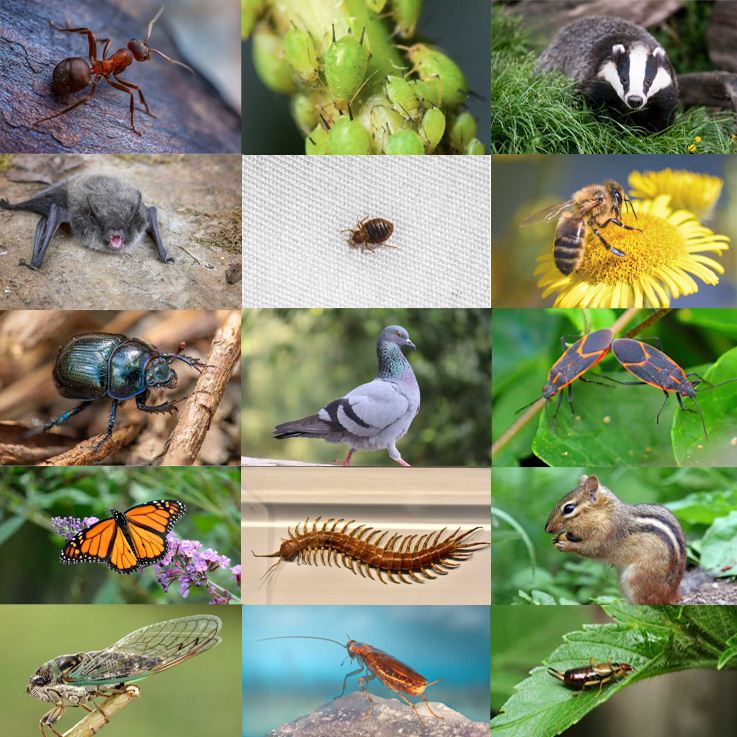
Clover Mite Life Cycle
The life cycle of clover mites (Bryobia praetiosa) consists of several distinct stages, from egg to adult. Here is a description of the life cycle of clover mites:
Egg Stage:
The life cycle begins with the deposition of eggs by adult female clover mites. These eggs are typically spherical and transparent and are quite small, measuring less than 0.2 millimeters in diameter. Female clover mites can lay several eggs over the course of their relatively short lifespan.
Larva Stage:
After an incubation period, the eggs hatch into tiny, six-legged larvae. The larvae are pale in color and actively move about, feeding on plant sap. This stage is relatively short, lasting a few days.
Nymph Stage:
After the larval stage, clover mites go through two nymphal stages. Nymphs have eight legs, like adult mites, and start to resemble the adult form. Their color gradually darkens from pale to the characteristic reddish-brown. Nymphs continue to feed on plants during this stage.
Adult Stage:
The final stage of the clover mite life cycle is the adult stage. Adult clover mites are fully developed, have an oval-shaped body, and reach a size of approximately 0.75 millimeters. They have the distinctive reddish-brown coloration that sets them apart. Adult clover mites are responsible for reproduction and the continuation of the life cycle.
Reproduction:
Clover mites reproduce via a process called parthenogenesis, which means that females do not require mating to produce fertile eggs. This unique reproductive strategy allows for rapid population growth. Female clover mites lay eggs throughout their adult life, and under favorable conditions, their populations can increase quickly.
Seasonal Activity:
The life cycle of clover mites is closely tied to seasonal changes. They are most active in the spring and early summer when temperatures are moderate. During hot summer months and in cold winter conditions, clover mites become dormant and are less active.
The entire life cycle of clover mites, from egg to adult, can be completed in a relatively short period, sometimes as little as a few weeks. Understanding this life cycle is essential for managing and controlling clover mite populations, particularly in agricultural and horticultural settings where they can be considered pests.

Hear From Our Happy Customers
-
"Wonderful Service"
Wonderful service. Jarvis is great. Took care of everything I needed. Thank you!
- Henry P. -
"Great Communication"
Tech was on time, communication was great, and he accommodated my needs.
- Alonzo W. -
"Professional & Considerate"
I’m pleased with Miche services. Jarvis came today. Professional and considerate. Thank you!
- Judy B. -
"Exceeds Expectations"
I can’t say enough positive things about this company... The tech that came out, Jarvis went above and beyond my expectations. Thank you guys, I will continue using your services.
- Jake M. -
"Fantastic & Patient"
Jarvis was fantastic and patient. He answered my questions with an in-depth explanation and addressed all of my areas of concern. Would love for him to be my assigned tech going forward. Well done!
- Yonnette M. -
"Very Knowledgeable"
The tech that arrived was courteous, professional, and very knowledgeable. He was Great.
- Uerial I.

